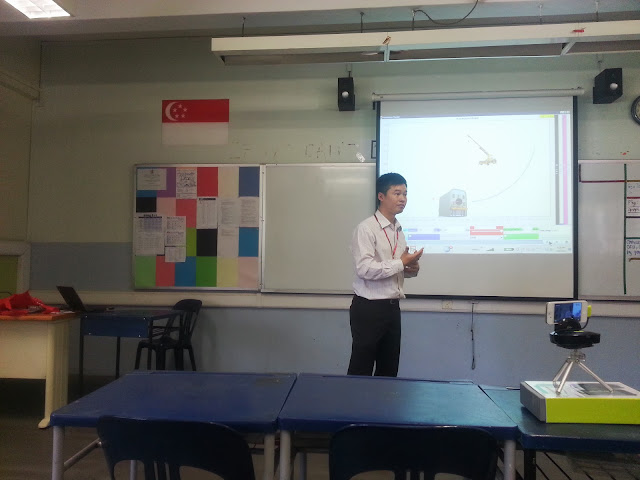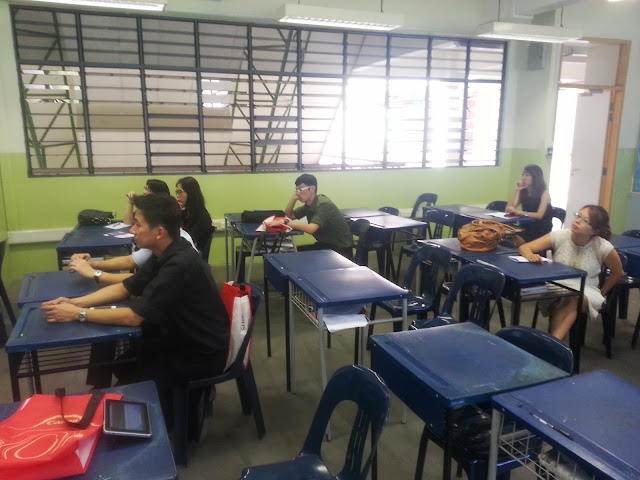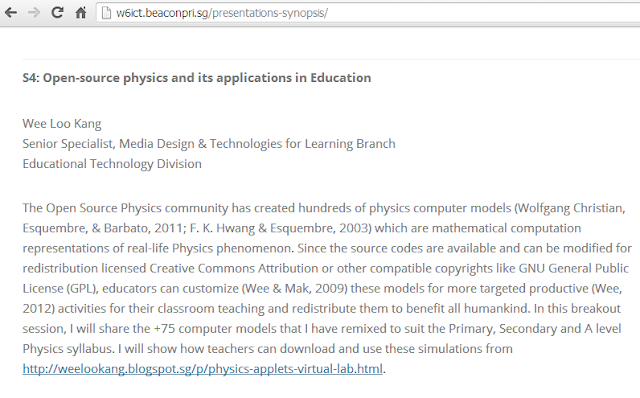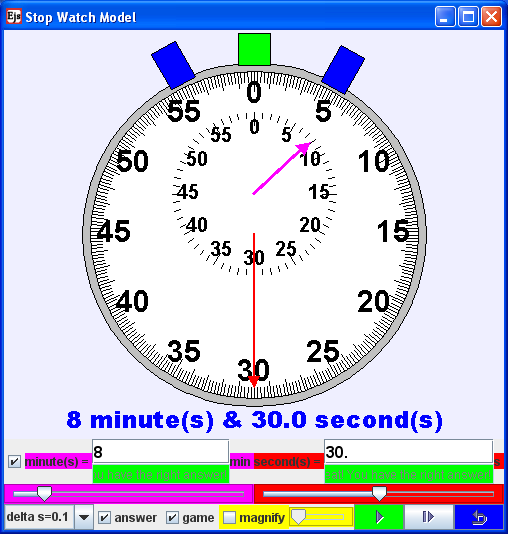http://weelookang.blogspot.sg/2013/04/invitation-to-present-at-w6-ict.html
S4: Open-source physics and its applications in Education W6 ICT Committee Professional Development Seminar 2013
updated 07feb 2015 emails deleted
thanks to Lee Yong for the invitation.
Event: W6 ICT Committee Professional Development Seminar 2013
Venue: Jurong Secondary School
Date: Friday, 19 July 2013
Time: 1620-1650
updated 07feb 2015 emails deleted
Time: 1620-1650
updated 07feb 2015 emails deleted
 |
| Wee L.K. (2013, 19 July) West 6 Cluster ICT Committee Professional Development Seminar 2013 – “Professional Development for Teachers by Teachers” S4: Open-source physics and its applications in Education, Jurong Secondary School, Singapore notice http://www.swivl.com/int-resellers/ Singapore, Malaysia, Indonesia VM Education Pte Ltd |
 |
| Wee L.K. (2013, 19 July) West 6 Cluster ICT Committee Professional Development Seminar 2013 – “Professional Development for Teachers by Teachers” S4: Open-source physics and its applications in Education, Jurong Secondary School, Singapore |
 |
| Wee L.K. (2013, 19 July) West 6 Cluster ICT Committee Professional Development Seminar 2013 – “Professional Development for Teachers by Teachers” S4: Open-source physics and its applications in Education, Jurong Secondary School, Singapore |
Abstract:
The Open Source Physics community has created hundreds of physics computer models (Wolfgang Christian, Esquembre, & Barbato, 2011; F. K. Hwang & Esquembre, 2003) which are mathematical computation representations of real-life Physics phenomenon. Since the source codes are available and can be modified for redistribution licensed Creative Commons Attribution or other compatible copyrights like GNU General Public License (GPL), educators can customize (Wee & Mak, 2009) these models for more targeted productive (Wee, 2012) activities for their classroom teaching and redistribute them to benefit all humankind. In this breakout session, I will share the +75 computer models that I have remixed to suit the Primary, Secondary and A-level Physics syllabus. I will show how teachers can download (look for Dropbox links) and use these simulations from http://weelookang.blogspot.sg/p/physics-applets-virtual-lab.htmlhttp://ictconnection.moe.edu.sg/ict-in-action also housed some of the tried lessons
The objectives of the event are:
- Develop reflective practitioners who are informed by research
- Provide a structured platform for practitioners to share their insights and findings
- Create opportunities for innovative use of ICT in education
outline of sharing:
primary science audience:
 |
| http://weelookang.blogspot.com/2012/02/primary-school-remix-for-pendulum.html Primary School remix for Pendulum by This email address is being protected from spambots. You need JavaScript enabled to view it. https://dl.dropbox.com/u/44365627/lookangEJSworkspace/export/ejs_Pendulumweemat.jar https://sites.google.com/site/perfectodemolito/simulation Author: Wolfgang Christian and F. Esquembre http://www.compadre.org/osp/items/detail.cfm?ID=7567 Author: lookang (remix version) http://www.phy.ntnu.edu.tw/ntnujava/index.php?topic=818.0 Author: lookang and This email address is being protected from spambots. You need JavaScript enabled to view it. (this primary school version) |
 |
| Ejs Open Source Stop Watch Model Java Applet with enhanced integer values for game and minute/second hands http://weelookang.blogspot.sg/2011/08/ejs-open-source-stop-watch-model.html https://dl.dropbox.com/u/44365627/lookangEJSworkspace/export/ejs_users_sgeducation_lookang_Stopwatchmagnifywee.jar author: dhasthagheer, added on by Fu-Kwun Hwang, and now slightly remixed by lookang |
 |
| The Zeroth Law of Thermodynamics by Energy2D :Author: Charles Xie. If A and B are in thermal equilibrium with C, then A and B will be in thermal equilibrium with each other if they are brought into contact. Notice thermal equilibrium occurs when there is no net heat flow and TA = 13.4 oC = TB = TC http://weelookang.blogspot.sg/2012/09/the-zeroth-law-of-thermodynamics.html http://energy.concord.org/energy2d/zeroth.html Author of Energy 2D: Charles Xie Author of this model The Zeroth Law of Thermodynamics: Charles Xie |
 |
| picture of a 19 April 2012 version with 1 to 20 possible (this case is only 3) large particles as the request by Jake the Frodo on Today 19 April 2012 at 02:53:12 amhttp://www.phy.ntnu.edu.tw/ntnujava/index.php?topic=1484.msg9150#msg9150 http://weelookang.blogspot.sg/2010/06/ejs-open-source-brownian-motion-gas.html https://dl.dropbox.com/u/44365627/lookangEJSworkspace/export/ejs_brownianmotionwee.jar author: paco, fu-kwun hwang and lookang |
|
| Virtual Laboratory of Direct Current Electrical Motor Model Students investigate the relationship between the variables collaboratively in groups of 2. A co-created virtual lab learning environment was designed with guided discovery worksheets to support the process of sense-making of the physics of Direct Current Electrical Motor. Actual lesson learning environment (java applet) can... Subject: Physics, Science Level: Upper Secondary, JC/CI Stream: Standard Level, Express/ Special, N(A), H1/ H2, H3 |
144 |
| Computer Supported Learning in Circular Motion Concept Mapping and Simulations Computer Supported Learning in Circular Motion Concept Mapping and Simulations. These lessons are under the Computer Supported Collaborative Learning ProPel-T or eduLab initiative. Through a series of student-centered activities focusing on the Concept Mapping Pedagogy, students make their understanding visible through the construction of their concept... Subject: Physics Level: Upper Secondary, JC/CI Stream: Express/ Special, H1/ H2, H3 |
31 |
| Computer Supported Learning in Gravitational Motion Concept Mapping and Simulations Computer Supported Learning in Gravitational Motion Concept Mapping and Simulations. These lessons are under the Computer Supported Collaborative Learning ProPel-T or eduLab initiative. Through a series of student-centered activities focusing on the Concept Mapping Pedagogy, students make their understanding visible through the construction of their concept maps. Subject: Physics Level: Upper Secondary, JC/CI Stream: H1/ H2, H3 |
41 |
| Virtual Laboratory of Kepler's Third Law Solar System Model Students investigate the relationship between the variables collaboratively in groups of 2. A co-created virtual lab learning environment was designed with guided discovery worksheets (tutorial) to support the process of sense-making of the physics of Kepler's Third Law Solar System Model. Actual lesson learning environment (java... Subject: Geography, Physics, Science Level: Upper Secondary, JC/CI Stream: Express/ Special, H1/ H2, H3 |
48 |
| Lesson Example | Hits |
|---|---|
| Virtual Laboratory of Geostationary Satellite around Earth Model Students investigate the relationship between the variables collaboratively in groups of 2. A co-created virtual lab learning environment was designed with guided discovery worksheets (tutorial) to support the process of sense-making of the physics of Geostationary Satellite around Earth Model. Actual lesson learning environment (java applet)... Subject: Physics, Science Level: JC/CI Stream: H1/ H2, H3 |
20 |
| Virtual Laboratory Gravitational Field & Potential of Earth and Moon Virtual Laboratory Gravitational Field & Potential of Earth and Moon Model Students investigate the relationship between the variables collaboratively in groups of 2. A co-created virtual lab learning environment was designed with guided discovery worksheets (tutorial) to support the process of sense-making of the physics of... Subject: Physics, Science Level: JC/CI Stream: H1/ H2, H3 |
19 |
| Virtual Laboratory Gravitational Field & Potential of 2 Mass Model Students investigate the relationship between the variables collaboratively in groups of 2. A co-created virtual lab learning environment was designed with guided discovery worksheets (tutorial) to support the process of sense-making of the physics of Gravitational Field & Potential of 2 Mass Model. Actual lesson learning... Subject: Physics, Science Level: JC/CI Stream: H1/ H2, H3 |
22 |
| Virtual Laboratory and Real Equipment Vernier Caliper and Micrometer Virtual Laboratory and Real Equipment Vernier Caliper and Micrometer. A lesson ( 90 minutes ) designed to blend or integrate the following: 1 Real equipment, (learning about the real world) 2 A computer model (transforming learning with technology) 3 Google form (learning feedback immediately during the lesson) Subject: Physics, Science Level: Lower Secondary, Upper Secondary Stream: Standard Level, Foundation Level, Express/ Special, N(A), N(T) |
174 |
| Energy Comes Alive with Customized Roller Coaster Simulation! In this lesson, the students are using a customized roller coaster simulation to learn about energy concept. They will be involved in a series of inquiry-based activities (e.g., investigating the energy change and making an evidence-based conclusion). To further support their learning, Google Forms and YouTube videos are also used. Subject: Science Level: Upper Primary Stream: Standard Level |
84 |
| Virtual Laboratory Thin Converging Lenses Model Virtual Laboratory Thin Converging Lenses Model classroom computer lab lesson was designed to allow 1. active student-centered inquiry on the Thin Converging Lenses computer model : 2. collaborative groups and investigate various aspects through different activities. They can then and come together to discuss and... Subject: Physics, Science Level: Upper Secondary Stream: Standard Level, Foundation Level, Express/ Special, N(A), N(T) |
46 |
 |
| Wee L.K. (2013, 19 July) West 6 Cluster ICT Committee Professional Development Seminar 2013 – “Professional Development for Teachers by Teachers” S4: Open-source physics and its applications in Education, Jurong Secondary School, Singapore |
